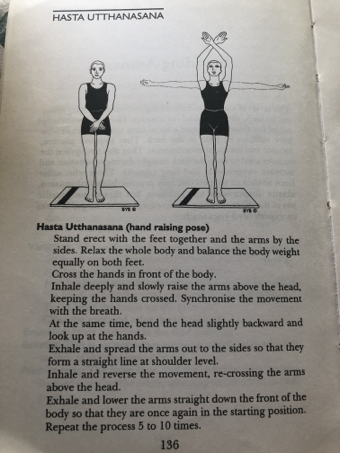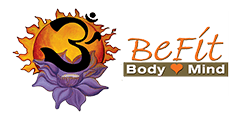The new ways Ashtanga is showing up
The world of ashtanga yoga is opening up! Now teachers that studied with Krishnamacharya the same time Pattabhi Jois did, but have not become so famous are being sought out for a reinterpretation of Krishnamacharaya’s teachings.
An ashtanga studio in Oklahoma owned by Andrew Eppler, a long time ashtangi has travelled to India seeking out other teachers of the Mysore traditions of yoga, some of his interviews are where this info comes from.
Link to his documentary about this:
Particularly this info comes from the person Krishnamacharaya was standing on in the famous picture, TRS Sharma. This is what he shared:
Here is a link to his video clip.
Breathing pattern is most important — rhythmically breathing is what Krishnamacharya stressed. He was very attentive to your Surya Namaskar (Sun Salutes) — after that you were free to practice what asana you needed.
Postures are about lightness in the body and flowing movements peacefully from one asana to another. This means energy can freely flow from one part of body to another. (Ungaladhala … (not sure if that is the correct spelling or pronunciation!) was the Sanskrit word used to describe the importance of lightness in the body.)
On Asanas or yoga postures
Asana = stress, strain, relax. Repeat.
When in asana some body parts are relaxed and some are not, but relaxation moves on from one part of the body to the other until the full body is relaxed.
Don’t forget the relax part of your asana practice!
The other side of yoga
Most important part of yoga is not the asana — or even the breath … it’s the cortical balance with thalamus function of our brain. Our thalamus is what sets our perceptions (drishti literally means ‘to perceive’ or perception). Our moods reflect our cortical balance. Real yoga teaches us how to manage our emotions and like more people!
First I want to briefly mention perception — its interesting, the thalamus receives signals from all our senses (except our nose/smell) then sends these sensations to our cerebral cortex for interpretation. But it is the thalamus that is most responsible for our perception not the cerebral cortex. The thalamus acts as a gate filtering which information from various channels (eyes, ears, touch, taste) is allowed to be relayed to the cerebral cortex for processing. Our thalamus sets our perception; important.
Drishti or looking place is about perception — not just looking. Drishti means perception! Our drishti in yoga may help us perceive more clearly. More on drishti here.
Managing our emotions is the other side of asana —
TRS Sharma speaks of two sides of asana;
- Therapeutic (autonomic nervous system balance, detoxing, stress/tension relief, to heal an ache/pain) and
- Managing emotions.
I want to talk more about yoga to manage our emotions.
Interestingly he spoke of the thalamus in balance with our cortical excitatory (glutamate) and inhibitory (GABA) neurotransmitters.
Yoga improves our cortical balance by increasing GABA-mediated inhibitory tone (keeping us calm) and enhancing peripheral oxytocin (making us like people ;). Hence improving relationships!
Over-Excitatory functions in the brain lead to anxiety, depression, mood swings, outrages, and other psychiatric issues. Glutamate is the opposite of GABA — it is critical for brain function — it stimulates our brain neurons to send signals that help you learn and remember, along with promoting other cognitive functions. Glutamate enhances the neuroplasticity of our brain helping our brain grow and change shape as it rewires pathways. Our body makes glutamate easily and many foods are sources of glutamate.
Glutamate is our main brain excitatory transmitter — it wakes our brain up. Balance is important though, too much glutamate can be a problem — remember MSG? it is pure glutamate; it is a neurotoxin that creates too much excitement in the brain.
Hence we need a balance between glutamate and GABA. GABA is our feel good chill out neurotransmitter, I call it the red wine neurotransmitter.
GABA is our main inhibitory neurotransmitter, when we are under the influence of GABA we relax. GABA can also reduce pain and discomfort — it is released as part of the “runners high” or the “yoga brain”.
One of the easiest ways to increase GABA is to meditate — Even as little as meditating 10 minutes a day can produce shifts in about 10 days, many studies suggest a half an hour of meditation daily produces noticeable changes in about a month or two — but shorter meditations are also very beneficial.
- GABA (gamma amino-butyric acid) is a messenger — a neurotransmitter, known to protect brain health by reducing anxiety, providing an overall sense of calm, and helping one to sleep well. It is best known for stabilizing moods. Anxiety, tension, insomnia and epilepsy are related to low levels of GABA.
- The best way to increase GABA is through meditation and foods. Once a food with GABA is ingested, it is absorbed easily and binds to GABA receptors in the peripheral nervous system leading to activation of the parasympathetic nervous system.
- Foods to increase GABA are fermented foods :), tea (especially oolong and green teas), noni (cactus fruit), valerian, chlorella, among others.
- Avoiding processed foods — especially processed foods containing MSG. Glutamate is the opposite of GABA — it is an neuro-excitatory activating the stress response. Glutamate uses the same receptors in our body as GABA so if you eat glutamate your body can not uptake GABA.
- The best way to increase GABA is through meditation and foods. Once a food with GABA is ingested, it is absorbed easily and binds to GABA receptors in the peripheral nervous system leading to activation of the parasympathetic nervous system.
When we have balance between GABA and glutamate in our brain we are better humans — we quarrel less, get upset less, and loose our cool less. This is an important function today in society! Make Yoga not War.
This balance between excitatory and inhibitory neurotransmitters in our brain is what helps us find balance in our emotional and intellectual thinking. Remember yoga is about our mindstuff!
How do we use yoga to find balance between our intellectual and emotional thinking? Meditative Movement.
That is the difference between exercise and yoga — yoga includes a contemplative awareness within the practice of postures. Especially beneficial for balancing the function of the brain is moving our extremities in rhythm with our breath. This enhances our GABA and oxytocin making us nicer people.
This is why sun salutes are such an important part of the practice!
And of course the other important parts of yoga that make yoga not just exercise — are bandhas (including **jiva bandha), drishti, and moving in rhythm with your breath – aka vinyasa.
- The act of relaxing your tongue on the roof of your mouth like we learned in our yogic breathing is called jiva bandha increases your vagal tone allowing you more flexibility in what you can do before you stress out !
**Tongue on the roof of your mouth — also known as Jiva Bandha is a very easy way to tone your vagus nerve for enhanced performance.
Here is a mini ‘sun salute’ you can do — this would be great way to break up sitting time at a desk.
Moving and breathing with Hasta Utthanasana (Pg. 136 in “Asana, Pranayama, Mudra, Bandha” by Swami Satyananda Saraswati

From the book “Asana Pranayama Mudra Bandha”
- Cross hands in front of body, Inhale and raise arms above your head keepinghas crossed — bend your head back slightly and look at your hands
- Exhale arms down to shoulder level (palms up), gaze straight ahead
- Inhale your arms overhead crossing them again over your head.
- Exhale lower your arms straight down in front of your body.
Or do a half sun salute 😉
- inhale arms up
- exhale forward bend
- inhale head up
- exhale forward bend
- inhale all the way up
- exhale Samasthiti
